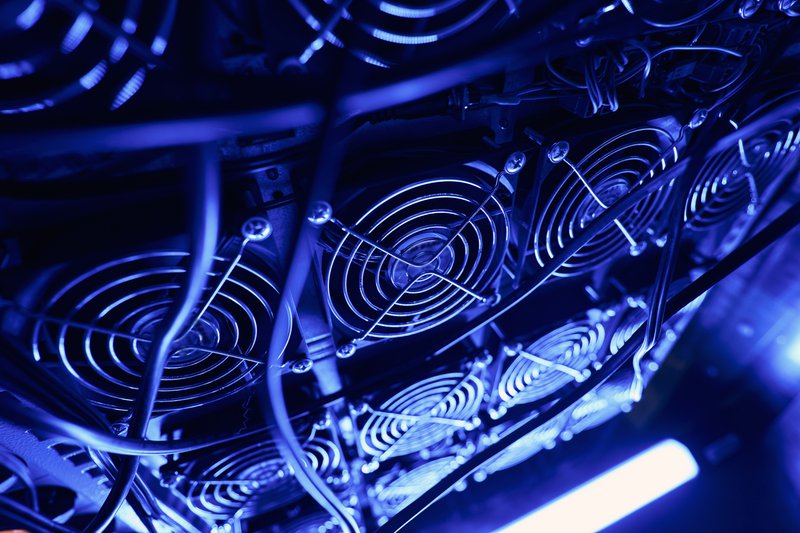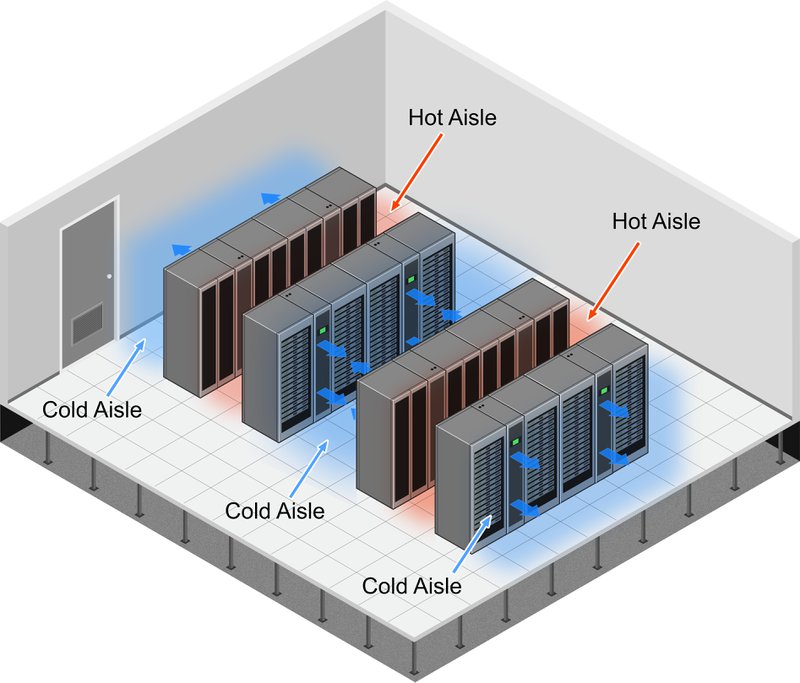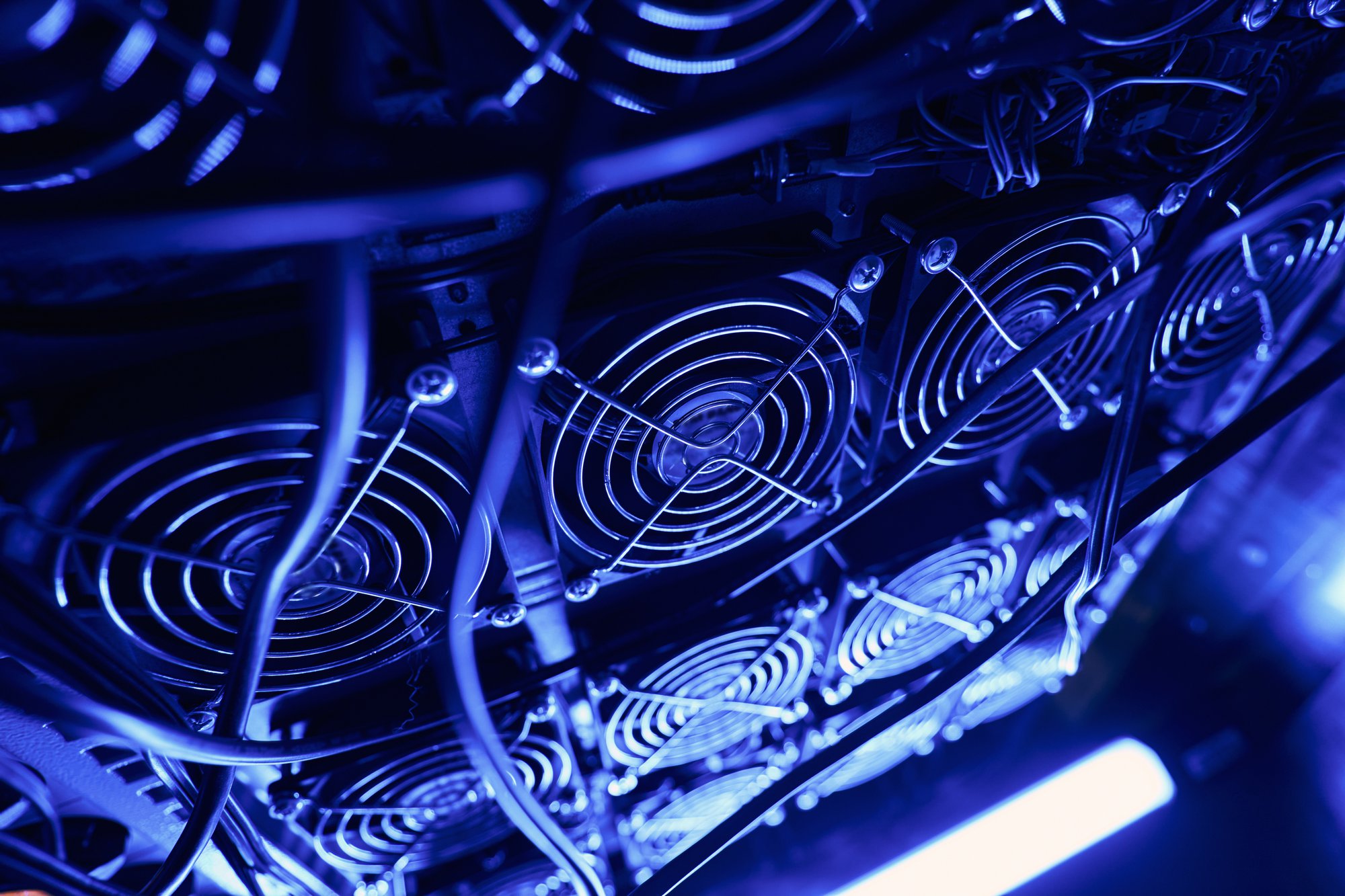Data center servers produce vast amounts of heat. As a result, several cooling techniques have been developed over the last few decades to keep server temperatures low. These techniques are part of an intentional long-term trend of ongoing improvements to cooling technology. Looking broadly, we see a journey from old and inefficient air cooling to today’s highly efficient liquid immersion cooling systems.
These cooling techniques differ in the mechanisms they use to dissipate heat. In general, they have an air or liquid coolant that transports heat from the servers. The choice of coolant and the design of the system affect how efficiently you can cool a data center.
Without appropriate cooling, servers overheat and slow down, eventually suffering serious damage. Severe overheating can even cause fires. Cooling is also one of the more costly operations of a data center, so it’s essential to select the best and most cost-effective cooling system available. At present, that’s single-phase liquid immersion cooling.

Early Air Cooling Techniques
When people started assembling servers, they needed a way to remove the resulting concentrations of heat from the data centers and closets. An obvious solution was to pump cold air into the room; similar to cooling the room with air conditioners. It’s not particularly efficient, but back then efficiency wasn’t a huge concern. The industry was still in its infancy, and environmental worries hadn’t penetrated board rooms.
A few older and smaller facilities still use basic air cooling, although most data centers are striving to make at least some improvements to efficiency. Also, the inefficiency of air cooling means it can only handle low-density racks. More powerful new processors and high-performance applications simply generate too much heat for air to dissipate.
Hot and Cold Aisles

As society continues using more data, data centers are growing ever larger. To handle increasing server densities, data centers have started to use heat containment strategies with separate aisles for hot and cold air; focusing cooling efforts on one side of the racks and channeling removed heat out of the other side.
Hot and cold aisles work more efficiently than cooling the whole room; the cold air goes where it can do the most good, so you waste less. This increases the performance of the data center’s cooling system, but it remains a far cry from modern liquid immersion cooling.
Temperature and Humidity Control
Two of the most important variables for performance and safety in a data center are temperature and humidity. Data centers have increasingly learned to control these variables to achieve desired goals. For example, keeping the temperature too high risks slow or damaged processors, but keeping the temperature too low costs extra and causes environmental problems. It also puts your electrical equipment at risk.
Too much or too little moisture also causes problems for servers, so data centers using air cooling have to manage the humidity to protect their electronics. However, those running Green Revolution Cooling’s (GRC) liquid immersion cooling system don’t have to worry about temperature and humidity control; the coolant automatically protects servers.
Liquid Cooling Techniques
Liquid cooling is a crucial advancement in data center cooling. It didn’t happen overnight though. Several related innovations and different liquid cooling techniques were devised. Liquid cooling innovations that bring the liquid closer to the IT equipment result in increased efficiency and a higher cooling capacity.
The liquid immersion technology itself goes back to before some other cooling techniques, but for uses in industrial applications and supercomputing applications. Data centers mainly used air cooling, then experimented with various liquid cooling techniques.
Alternative cooling types include a rear door heat exchanger (RDHx), in which radiator-like doors are attached to the server rack to transfer heat to a liquid. Similarly, “touch,” “direct-to-chip,” or “liquid-to-chip” cold plate cooling connects a metal plate to the processor, and liquid carries the heat away. However, neither of these alternatives is as direct or effective as immersing the entire store of servers in a liquid coolant.
All of these cooling techniques involving liquid have more capacity than air cooling. For high-performance computing projects, liquid has already become a critical technique because air doesn’t cool well enough. With processors becoming more power-hungry, liquid cooling is now becoming more important for data centers in general.
Single-Phase Liquid Immersion Cooling
The previous stages in the evolution of data center cooling techniques have brought us to the newest solution. Factoring in upfront and operating costs, compute density, environmental impact, reliability, and other key concerns of data center operators, GRC’s single-phase liquid immersion cooling offers the best all-around package for data centers.
There are two approaches to liquid immersion cooling that seem similar at first glance: single-phase and two-phase. While these both rank among the most efficient cooling techniques on the market, there are important differences. Single-phase is a much simpler technology GRC has devised into a practical system for real data centers. By contrast, two-phase has numerous technical and environmental challenges that make it more of a theoretical development.
Also, the two-phase coolant can be difficult to acquire, while GRC makes single-phase coolant available anywhere on the planet. Single-phase cooling is also significantly less expensive than two-phase. So, if you want the most effective, cost efficient cooling solution available today for your data center, single-phase liquid immersion cooling is your answer.
Use the Latest Data Center Cooling with GRC
Data center cooling has come a long way from the old days of simply blowing cold air into the room. For example, we’ve seen the division into hot and cold aisles, temperature and humidity controls, and other refinements. More recently, a series of liquid cooling techniques have been developed, resulting in today’s leading technology: single-phase liquid immersion.
Single-phase immersion offers data centers the unbeatable combination of extreme efficiency and low cost. Its other benefits include environmental sustainability, efficient use of space, flexibility to install anywhere, and silent operation.
Find out how GRC’s liquid immersion cooling can improve your data center’s performance. Data centers of all sizes have already installed immersion tanks for cloud, enterprise, and many other use cases. There’s no need to wait—talk to us about your cooling goals today.





